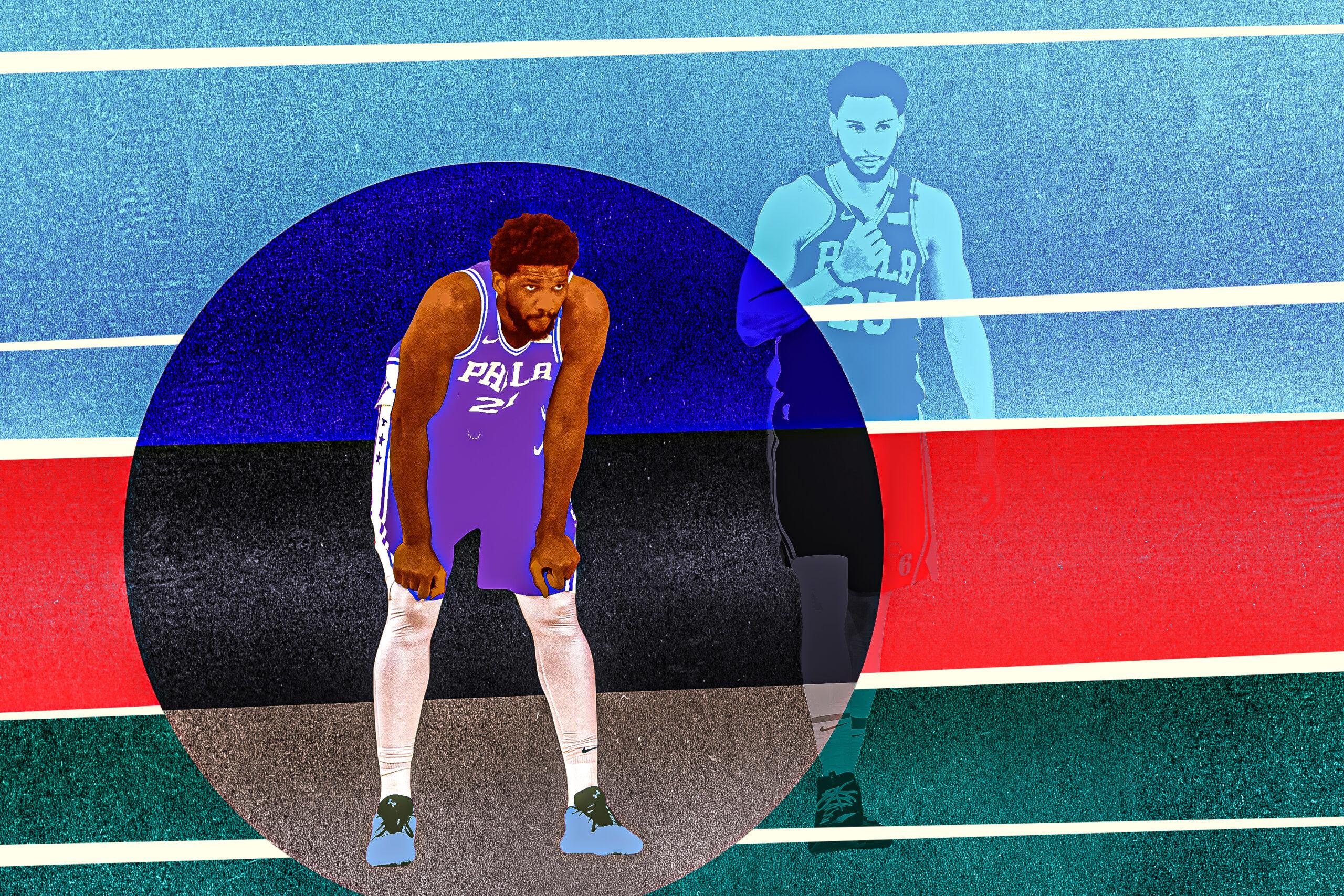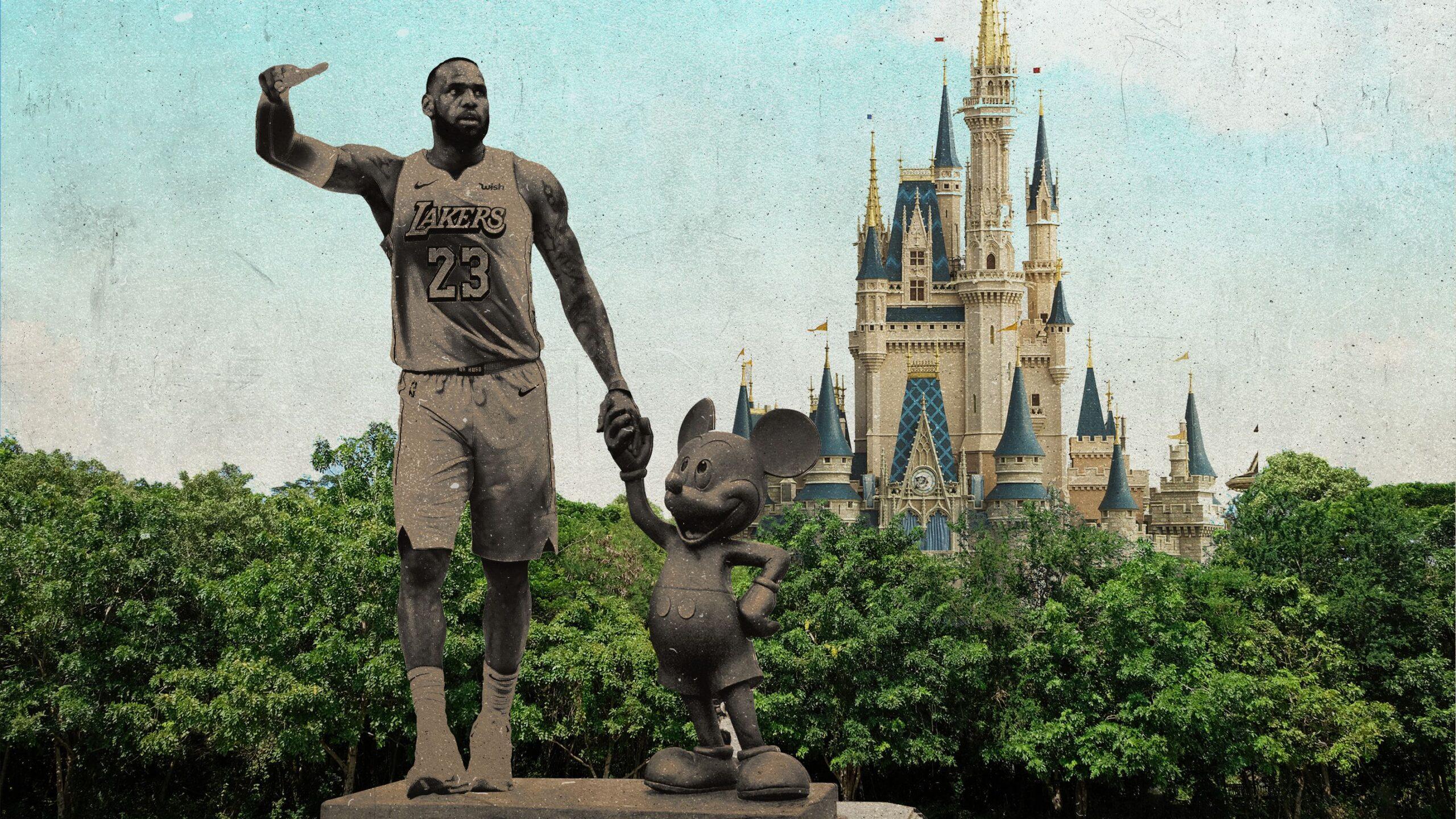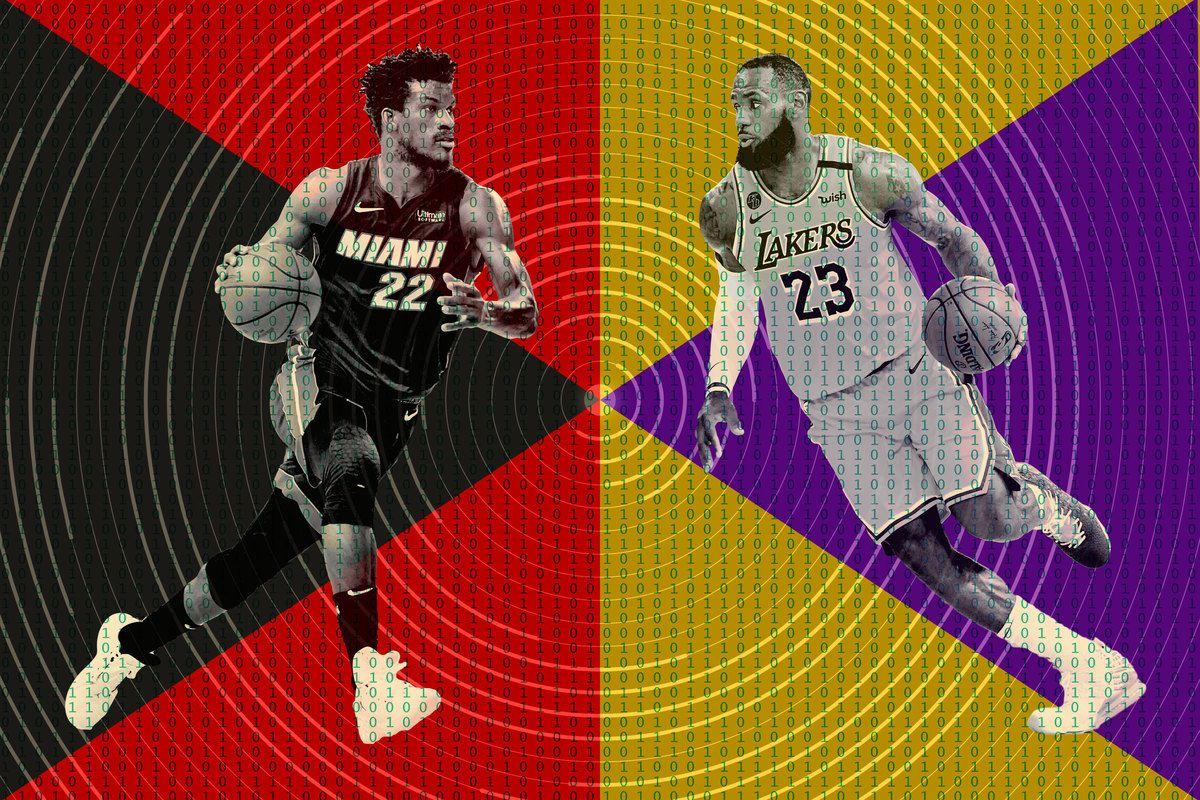
The Philadelphia 76ers will go nowhere without Ben Simmons. On Saturday, the Sixers announced he needs surgery to remove a loose body from his injured left knee and will be out for the foreseeable future. Simmons causes havoc by turning defense into offense with steals and deflections, and he’s one of the league’s best and most versatile on-ball defenders. No other player guarded All-NBA players more often than Simmons did this season, per BBall-Index data. He cannot be replaced.
“Defensively, you feel the pain. Immediately, you talk about playing more zone or doing more switching. Ben’s versatility is off the charts. Even him being found on centers didn’t really worry me. People don’t understand how bull-strong he is. So, it’s complicated and bothersome,” head coach Brett Brown said before the Sixers lost to the Trail Blazers on Sunday. “No matter what you do, it’ll have to be done by committee. It can’t all be on Joel [Embiid], it’s gotta be a group thing. But I would be lying if I didn’t say you do immediately feel a level of pain with his absence.”
What Brown needs is a lot to ask. Embiid will need to protect the paint better than ever before—and for the left ankle injury that forced him out of Sunday’s game to prove minor. (Brown said he “didn’t know” if Embiid would play in the Sixers’ next game on Tuesday.) Al Horford will need to turn back the clock. Tobias Harris and Alec Burks will need to start locking down. Otherwise, Josh Richardson or Matisse Thybulle, their best remaining perimeter stoppers, will need to change roles.
Simmons was Philadelphia’s weapon against whichever top scorer the Sixers face in the first round—Jayson Tatum, Jimmy Butler, or the red-hot T.J. Warren. Shuffling matchups will have a domino effect. Richardson or Thybulle have primarily defended opposing guards and smaller wings; assigning them to a leading scorer means the Sixers will need to find someone else to contain a shot-creating guard like Kemba Walker, Goran Dragic, or Victor Oladipo. Shake Milton has been up and down on defense, and now he needs to return to being the energetic stopper he was in college. Defense against speedy point guards who can shoot off the dribble was problematic for the Sixers in past seasons, just as it was on Sunday against Damian Lillard, who got wherever he wanted on his way to scoring 51 points. Things could get worse now that everything is out of alignment.
Philadelphia’s entire roster needs to be reevaluated this offseason. By experimenting now, the Sixers could get a clearer picture of what needs to change. Simmons is undeniably an all-world defender and a dynamic passer, but he’s also been deservedly benched in the fourth quarter of a playoff game for T.J. McConnell. When you are allergic to shooting 3s in today’s league, it can hurt the rest of the team. Floor spacing suffers and it stagnates the half-court offense. Questions about Simmons’s fit with Embiid have persisted largely because of this big shooting wart. Will Simmons ever shoot? Should the Embiid-Simmons core be broken up? How would this team perform with a more traditional point guard? I tend to think the Embiid-Simmons core can work, and it’s about finding the right pieces around them. But there’s no doubt that it’s not a natural partnership. Now everyone will get an extended look at the team in important games without its perplexing playmaker.
The big question for the Sixers in the remainder of bubble play is whether a modern offense can find success in the postseason by playing through the post. At Disney World, Embiid is averaging five more post touches per game than he was prior to the hiatus, per NBA Advanced Stats. Embiid played only six minutes Sunday before he went out, so we didn’t get a long look at a Sixers team that orbits around only him. But Horford started in place of Simmons, and Brown has already suggested that they’ll force-feed even more post touches to Embiid.
The Sixers are right to funnel the ball Embiid’s way: He’s a diverse post scorer who can overpower opponents with power moves or use fakes to dance his way to the basket. No other big man draws more fouls from the post than him, either. And now that he’s developed his passing ability, he makes teams pay for doubling him. Put it all together and Embiid has scored 1.12 points per post-up this season, which is better than anyone since Dirk Nowitzki averaged 1.15 points per post-up in 2010-11, per Synergy (minimum 300 total post-ups). But as the chart below shows, Embiid’s dominant regular-season numbers have declined in the playoffs.
Joel Embiid Points Per Post-Up
Embiid was contained by Horford in 2017-18 and then by Marc Gasol in 2018-19. Will that happen again this time around? Potential first-round matchups are in his favor, at least. Embiid has dominated Boston’s smaller frontcourt; he’s made Myles Turner look like a pipsqueak; and Miami has had trouble against him, too. Few teams are built to stop a post player of his caliber, so he should find more success, especially considering spacing will be better because of Simmons’s absence. But opponents can game plan during the playoffs and strategically time pressure and double-teams more than they can during the regular season. No matter the matchup, Embiid will need to maintain his efficiency and make opponents suffer when they double by finding cutters and shooters. But then it’s on those players to hit shots.
You’d think a team led by two limited perimeter threats would be littered with knockdown shooters, but the Sixers have none. Horford, Richardson, and Thybulle are average shooters. Richardson tied a season high with six 3-pointers on Sunday, but he’s made only 34.4 percent of his 3s off the catch, per NBA Advanced Stats. Harris has made only 37 percent of his spot-up 3s in his career, per NBA Advanced Stats. Burks and Furkan Korkmaz can shoot, but they aren’t reliable defenders. A post-centric style of play could expose some of the Sixers’ existing flaws.
Still, these players aren’t duds. The Sixers might be done-zo without Simmons, but it’s still critical that their head coach shows a necessary level of adaptability to make the most of the situation they’re in. Between now and the playoffs, can Brown tweak their half-court offense to have all four players space from behind the arc? Or will a player continue to sit in the dunker’s spot and limit spacing? Will they begin running more pick-and-roll with Embiid as a screener? Embiid was seldom used as a roller in past seasons, partially due to Simmons running point and Embiid’s unwillingness to space the floor, and partially due to the lack of shooters around the duo. Now seems like a logical time to try doing it more frequently.
“The path to scoring is quite obvious with Jo and spacing, trying to pick-and-roll and roll Joel, with a lot of shooters around him. That world becomes a little clearer when you don’t have Ben offensively,” Brown said before Sunday’s game. All right, so let’s see it. Brown hasn’t exactly shown he can make the right adjustments in the past. In mid-January, while Embiid missed nine games with a dislocated left ring finger, the Sixers played through Simmons. But Philadelphia scored only 104.8 points per 100 possessions, which ranked 28th during that time. Milton was collecting dust on the bench when they could have used his shot creation. Did Brown and his coaching staff not recognize the talent on their own roster?
Simmons has long been reluctant to shoot 3s or screen-and-roll to the rim; that changed this season, but it’s been a frustratingly slow evolution. Perhaps Simmons’s own stubbornness is the reason, but Brown has also had trouble getting Harris to replace midrange jumpers with more 3s and at-rim attempts. Last season, Butler suddenly stopped taking 3-pointers even when he was open. Why aren’t Sixers players doing the obvious? Brown will need to hold his players accountable to win.
Without Embiid and Simmons on Sunday, we got a bit of a look at how the Sixers might operate without their two stars. Simmons-Horford lineups had stabilized their offense without Embiid thanks to their respective playmaking abilities, and against Portland, much of the responsibility fell on Horford. The Sixers ran dribble handoffs through him, and had pretty good success. Portland’s laughably bad defense on the second game of a back-to-back isn’t the best barometer, but Horford looked more like himself than he has for almost the entire season.
The Sixers need to know if Horford should be part of their future. He has not been what they expected after signing him to a four-year, $109 million contract last summer. He’s a less-than-ideal fit with Simmons, since his rim-protection ability has declined, or with Embiid, since he’s not a great floor spacer. The Sixers will need another reliable shot creator to emerge. Before the game, Brown said he planned to use a nine-man rotation. He ended up playing 12 guys as he searched for something that worked. Richardson and Alec Burks led the charge, scoring 34 and 20 points, respectively. Yes, we’re really at the point the Sixers need their offense.
Richardson, Milton, or Burks will need to step up and consistently initiate Sixers offensive sets. Burks is fine, but has never handled a large load. Richardson got better in each of the past few seasons in Miami, but in Philadelphia his decision-making has been shoddy—could he improve with more regular opportunities? Milton’s minutes have largely been tied to Embiid, and that’s unlikely to change. Milton is at his best in an offense with multiple shot creators so he can thrive off the ball as a shooter—which was the appeal of playing him next to Simmons in the first place. If the Sixers fail to generate offense against better defenses, it will highlight the need for the front office to find another player who can reliably create shots for others.
The Sixers have tried plenty of times. They traded up for Markelle Fultz. They dealt for Jimmy Butler. Even Richardson seemed like someone who could take on that role in spurts. But none of them have worked out. In January, I suggested that the Sixers trade for Chris Paul; I would still support that move if the price is right, as I believe he’d turn them into legitimate Finals contenders while solving many of these existing problems. Paul can defend opposing guards at a high level, drain shots off the catch, and, of course, orchestrate the offense better than most point guards.
The coming weeks will display which players need to go and which ones could possibly stay. It’s time for Richardson or Harris to show they can be more than expensive role players. Richardson will be a free agent after next season, and could be pricey to re-sign. The Sixers invested Landry Shamet, two first-round picks, and $180 million in Harris. Is it not fair to hope for more from him as an offensive weapon? Horford seems somewhat rejuvenated in Orlando, and they’ll need that to continue.
Stars win championships, though: Embiid will also need to show he can handle a massive workload on offense and still maintain his All-Defensive-caliber play. Considering his long and worrisome injury history, and the fact he’s had on-and-off conditioning problems, it’s possible he would experience diminishing returns on defense. That would hurt the team’s chances at making a deep playoff run. At least the Sixers can test-drive that approach to see how this team might look leaning primarily on Embiid.
And then there’s the flip side: What if the Sixers actually make a run without Simmons? What if Embiid tears apart the Celtics and then the Raptors, and the Sixers find themselves in the Eastern Conference finals against the Bucks? People around the league have long debated whether it makes more sense to build around Simmons or Embiid; wouldn’t postseason success reveal that Embiid and Simmons should be broken up? The Sixers wouldn’t need to make any big moves any time soon since Embiid is signed through 2022-23 and Simmons through 2024-25, but a deep run would at least amplify that debate.
In all likelihood, the Sixers will flame out early. There will be some good: Life will be easier for Embiid on the post, which will highlight the need for Simmons to shoot 3s. And there will be some bad: The lack of shot creation will reveal the importance of finding another creator, which would require moving a core piece like Harris, Horford, or Richardson. There will still be questions: Will Brown remain the coach? Can Embiid and Simmons coexist? What moves are even possible considering the massive contracts on their books? The next few weeks could provide some clarity, but no matter what, changes will need to be made for the Sixers to ease their pain.

